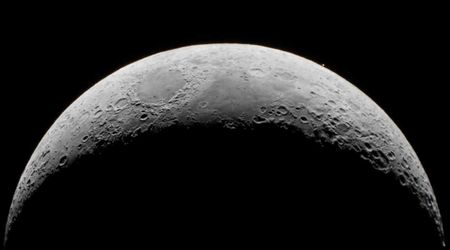Dust collected by Apollo 17 astronauts in 1970s reveals the moon’s true age

Our universe is billions of years old, and the origin of the stars, as well as the components it carries within itself, is way older than one can imagine. The moon is the oldest companion of our planet and has been of significant interest to space enthusiasts. But, exactly how old is it? A study published in the journal Geochemical Perspectives Letters answers this query. The Apollo 17 Lunar Mission brought back dust and rock samples from the moon, which helped scientists figure out the actual age of Earth's natural satellite. It was revealed that the moon could be 40 million years older than thought before.

NASA astronauts Eugene Cernan and Harrison Schmitt collected the samples once they landed on the lunar surface on December 11, 1972. The initial analysis estimated that the moon was 4.425 billion years old. A new analysis of the sample found zircon crystals, which were dated to 4.46 billion years old. “These crystals are the oldest known solids that formed after the giant impact. They serve as an anchor for the lunar chronology,” said senior study author Philipp Heck, a Robert A. Pritzker Curator for Meteoritics and Polar Studies at the Field Museum of Natural History in Chicago.

The study was led by the US National Science Foundation, along with researchers from the Field Museum and the University of Glasgow. Northwestern University's atom-probe tomography facility was utilized to study the samples, as per CNN. “In atom probe tomography, we start by sharpening a piece of the lunar sample into a very sharp tip, using a focused ion beam microscope, almost like a very fancy pencil sharpener,” said lead study author Jennika Greer, a research associate in Earth sciences at the University of Glasgow.

The moon was formed during a collision with Earth, but this impact could have heated the surface. Zircon crystals could not have formed when the rocks were molten, so their presence was at a time when the rocks had cooled down. Otherwise, they would melt with no trace of chemical signature. The atom-by-atom analysis of the crystal helped experts understand how many had experienced radioactive decay. Depending on this number and length of the process, they could asses the age of a sample by looking at the proportion of uranium and lead atoms.

"Radiometric dating works a little bit like an hourglass," said Heck. "In an hourglass, sand flows from one glass bulb to another, with the passage of time indicated by the accumulation of sand in the lower bulb. Radiometric dating works similarly by counting the number of parent atoms and the number of daughter atoms they have transformed into. The passage of time can then be calculated because the transformation rate is known," he added, as per the US National Science Foundation.

This method and the research were a testament to the technological reach of humanity since the lunar sample arrived. "These samples were brought to Earth half a century ago, but only today do we have the necessary tools to perform microanalysis at the requisite level, including atom-probe tomography," commented co-author Dieter Isheim. NASA was aware of this technical growth, which was why they waited for years to unseal the rare samples collected during the Apollo mission. “The Moon is an important partner in our planetary system,” Heck added.









